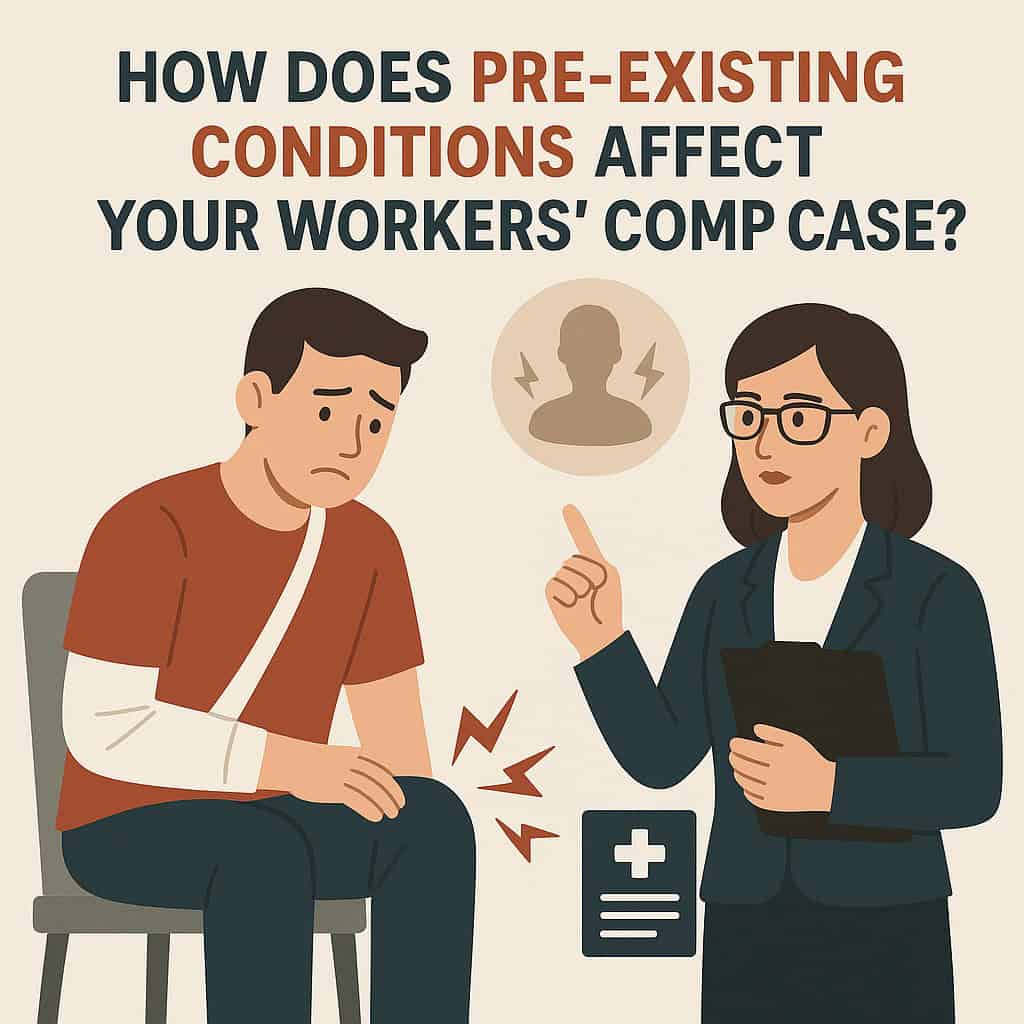Understanding how pre-existing conditions affect your workers’ comp case is crucial for anyone navigating this process. A pre-existing condition can complicate your claim. Common conditions like back pain or arthritis may lead insurers to dispute your case. This can create confusion and stress. You deserve clarity about your rights and the steps you need to take. A workers’ comp attorney in Rockford can offer guidance tailored to your situation. You may worry about whether your condition will prevent you from receiving compensation. The truth is pre-existing conditions do not automatically disqualify you. What matters is how the workplace incident worsened your health. You need to demonstrate that your job contributed to your injury. With legal assistance, you can gather the needed proof. Knowing you have options can ease your concerns. By understanding the law and seeking expert advice, you can protect your rights and pursue the benefits you deserve.

What Are Pre-Existing Conditions?
Pre-existing conditions are health issues that existed before a new injury. These can range from chronic illnesses like diabetes to previous injuries. It’s important to understand these conditions do not bar you from claiming workers’ comp benefits. Instead, you need to show the work incident worsened or aggravated the condition.
Impact on Workers’ Comp Claims
Pre-existing conditions often lead insurers to scrutinize claims more closely. They might argue the workplace did not contribute to your injury. This can delay your compensation. You need strong evidence showing the work environment exacerbated your condition.
Gathering Evidence
Evidence is critical. Medical records showing the condition before and after the incident help establish your claim. A diary detailing any changes in your symptoms can also support your case. Consult with a healthcare provider to evaluate your condition accurately. This documentation is essential for demonstrating how your job worsened your health.
Legal Guidance
Consulting a knowledgeable attorney can streamline this process. Legal experts can help you gather evidence and communicate effectively with insurance companies. They understand how to present your case to highlight how the workplace incident affected your health.
Comparison of Pre-Existing Conditions and New Injuries
| Factor | Pre-Existing Condition | New Injury |
| Medical Evidence | Required to show aggravation | Required to show occurrence |
| Insurer Scrutiny | High | Moderate |
| Potential Challenges | Proving workplace impact | Proving workplace causation |
Your Rights
The law protects workers with pre-existing conditions. Employers cannot deny claims solely based on prior health issues. You have the right to a fair evaluation of how the job aggravated your condition. Knowing these rights helps you stand firm against unfair denials.
Steps to Take
- Report the injury immediately to your employer.
- Seek medical attention promptly.
- Document your symptoms and any changes.
- Consult an attorney to understand your rights.
These steps ensure you have a strong case. Prompt reporting and medical care are crucial for linking your condition to the workplace incident.
Conclusion
Pre-existing conditions can complicate workers’ comp claims, but they don’t eliminate your right to compensation. You need to show how work activities worsened your condition. Gathering strong evidence and consulting legal professionals are key steps. Understanding your rights and responsibilities will make this process less stressful. If you face challenges, remember that help is available. For more information on workers’ comp and your rights, visit this U.S. Department of Labor page. By staying informed and proactive, you protect your health and financial well-being.

